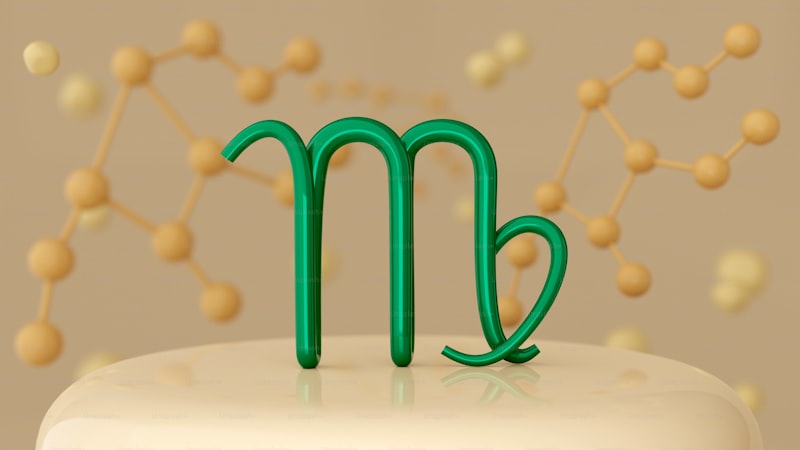Have you ever wondered how invasive species manage to disrupt ecosystems so effectively? The answer lies in their molecular ecology, a fascinating field that explores the genetic makeup and evolutionary adaptations of these intruders. Invasive species, whether they’re plants, animals, or microorganisms, often possess genetic traits that give them a competitive edge over native species. This genetic advantage allows them to thrive and spread rapidly in new environments.

One of the key aspects of molecular ecology is understanding how these invasive species adapt to new habitats. Through genetic analysis, scientists can pinpoint specific genes that contribute to traits like rapid growth, high reproductive rates, or resistance to local diseases and predators. These genetic traits are often the result of evolutionary processes that occurred over generations in their native habitats.
Moreover, molecular ecology helps researchers track the pathways and origins of invasive species. By studying the DNA of invasive populations, scientists can trace back their geographic origins and understand how they were introduced into new ecosystems. This information is crucial for developing effective management strategies to control or eradicate invasive species without harming native biodiversity.
Invasive species also serve as a model for studying ecological and evolutionary processes in real-time. Their ability to adapt quickly to changing environments provides valuable insights into how organisms respond to environmental challenges such as climate change or habitat destruction.
The study of molecular ecology in invasive species sheds light on how genetic factors influence their success in new environments. By unraveling the genetic mysteries of these invaders, scientists can better predict their behavior and mitigate their impact on ecosystems worldwide.
This article explores the intriguing field of molecular ecology in the context of invasive species, highlighting its importance in understanding their genetic adaptations and ecological impacts.
Unveiling the Genetic Footprint: Molecular Ecology of Invasive Species
At its core, molecular ecology delves into the DNA of organisms, revealing patterns and relationships crucial to understanding invasive species. These genetic fingerprints act as clues, guiding researchers through the labyrinth of biological invasion. By analyzing genetic markers, scientists can trace the origins of invasive species, pinpointing where they originated and how they spread across continents.
Consider the analogy of a genetic detective unraveling a complex case. Each gene sequence acts like a distinct piece of evidence, telling a story of migration and adaptation. Through advanced techniques like DNA barcoding and population genomics, researchers decode the molecular signatures that define invasive species’ success. It’s akin to reading a genetic map, where each marker represents a chapter in the invasive species’ evolutionary journey.
Moreover, molecular ecology not only identifies invasive species but also sheds light on their ecological impacts. By studying gene flow and genetic diversity, scientists gauge how invasive species interact with native flora and fauna. This understanding is crucial for predicting ecological disruptions and devising effective management strategies.
Picture the ecological landscape as a canvas, where invasive species paint their genetic legacy. Molecular ecology acts as both artist and historian, capturing these intricate patterns with precision. It allows us to comprehend the genetic underpinnings of invasion biology, offering insights that traditional ecological methods alone cannot provide.
From Genes to Ecosystems: Exploring the Molecular Ecology of Invasive Species

Imagine genes as tiny architects designing the blueprint of life. When a new species infiltrates an ecosystem, it’s like a rogue builder adding unexpected wings to a well-structured building. The molecular interactions between the invasive species and their environment set off a cascade of effects, altering everything from nutrient cycles to predator-prey dynamics.
At the heart of molecular ecology lies the quest to understand these interactions. Scientists investigate how invasive species adapt to new environments at the genetic level. They look into which genes confer traits like rapid growth or resistance to local pathogens, traits that help invaders outcompete native species.
One fascinating area of study is epigenetics—the molecular switches that can turn genes on or off without changing the underlying DNA sequence. It’s like having a set of keys that can unlock different doors in the genetic mansion. Epigenetic changes allow invasive species to swiftly adapt to new conditions, sometimes outpacing native species in the race for survival.
But molecular ecology isn’t just about genes—it zooms out to examine how these genetic changes ripple through entire ecosystems. Picture a pebble dropped into a pond: the initial splash represents the introduction of an invasive species, and the expanding ripples symbolize its far-reaching impacts. These species can alter habitat structure, change species interactions, and even modify nutrient cycling patterns.
Understanding the molecular ecology of invasive species isn’t just an academic pursuit—it’s crucial for conservation and management efforts. By deciphering the genetic strategies of invaders, scientists can develop targeted approaches to control their spread. This knowledge helps in restoring balance to ecosystems under siege, preserving biodiversity, and safeguarding the services that nature provides to humanity.
Cracking the Code: How Molecular Ecology Redefines Invasive Species Management
So, what exactly is molecular ecology? Think of it as CSI for the natural world. Scientists use advanced genetic tools to unravel the secrets of invasive species. By studying their DNA, researchers can trace their origins, map their spread, and even predict their future behavior. It’s like decoding a genetic fingerprint that tells the story of an invasive species’ journey.
Imagine you’re tracking the movements of an elusive spy through a crowded city. Molecular ecology operates in a similar way, except the spies are invasive species and the city is the ecosystem. By understanding their genetic makeup, scientists can identify key invasion pathways and hotspot areas. This knowledge empowers conservationists to target interventions more effectively, like deploying traps or barriers at critical points.
But the benefits don’t stop there. Molecular ecology also helps in understanding how invasive species adapt to new environments. Just as detectives study criminal behavior patterns, scientists analyze genetic adaptations that allow invaders to thrive. This insight is crucial for developing strategies to disrupt their success, whether through biological control or habitat restoration.
Moreover, molecular techniques provide a toolkit for early detection of invasive species. Like detecting a virus in its incubation phase, scientists can spot invasive species before they cause widespread harm. This proactive approach saves time, money, and most importantly, protects fragile ecosystems from irreversible damage.
In essence, molecular ecology isn’t just about cracking codes; it’s about rewriting the playbook on invasive species management. By harnessing the power of genetics, scientists are reshaping conservation strategies worldwide. It’s a testament to human ingenuity and our commitment to preserving biodiversity for future generations. So next time you hear about invasive species wreaking havoc, remember: molecular ecology is on the case, decoding nature’s mysteries one gene at a time.
Behind the Invasion: Insights from Molecular Ecology Studies
Ever wondered how seemingly innocuous species become invasive juggernauts, disrupting ecosystems worldwide? Molecular ecology studies provide a fascinating glimpse into this ecological phenomenon. Unlike traditional ecological research, which focuses on observable behaviors and interactions, molecular ecology delves into the genetic makeup and evolutionary history of species.
At its core, molecular ecology investigates the genetic diversity within populations and how these genetic variations contribute to their ability to invade new environments. Imagine each invasive species as a traveler equipped with a unique set of genetic tools—a passport to infiltrate and thrive in foreign lands. These genetic passports, often carrying advantageous traits like rapid reproduction or tolerance to environmental stress, enable invaders to outcompete native species.
Moreover, molecular studies unravel the pathways of invasion. It’s akin to tracing the roots of a family tree but with invasive species. Scientists can map out where these species originated, how they spread across continents, and pinpoint the mechanisms that aid their establishment in new habitats. It’s like solving a complex puzzle where each genetic marker tells a story of migration and adaptation.
One of the key insights from molecular ecology is understanding the role of human activities in facilitating invasions. From global trade to climate change, human actions inadvertently transport species across continents, creating opportunities for invasion. Molecular tools help identify these pathways and provide crucial data for developing strategies to prevent future invasions.
Molecular ecology studies offer a deep dive into the genetic landscapes of invasive species, revealing their secrets and shedding light on their ecological impacts. By unraveling these genetic mysteries, scientists not only enhance our understanding of invasive biology but also pave the way for more effective conservation and management practices.
DNA Detective: Tracing Invasive Species Through Molecular Ecology
Through the lens of DNA analysis, researchers can piece together the identity of invasive species, often elusive and disruptive to natural habitats. By extracting genetic material from soil, water, or even from the organisms themselves, scientists can detect minute traces left behind. These traces act as clues in a forensic puzzle, helping scientists reconstruct the journey of invasive species from their original habitats to new, often far-flung environments.
The process is akin to solving a complex mystery. Just as a detective uses fingerprints to identify a suspect, molecular ecologists use DNA markers to identify invasive species and understand their ecological impact. Each species leaves a unique genetic signature, much like a fingerprint, which allows scientists to differentiate between native and invasive populations.
Moreover, DNA detective work extends beyond mere identification. It offers insights into how invasive species adapt to new environments, spread across landscapes, and interact with native species. This knowledge is crucial for developing effective management strategies aimed at conserving biodiversity and restoring ecological balance.
In essence, molecular ecology empowers scientists to peer into the hidden realms of ecosystems, armed with the language of genes. It transforms our understanding of biological invasions from a mere observation into a precise science, where DNA acts as the storyteller of ecological narratives. As technology advances and our understanding deepens, the DNA detective continues to uncover new insights, revealing the intricate web of life on our planet.
Genetic Invasion: The Role of Molecular Ecology in Predicting Spread
Imagine a world where the movement of species is akin to a strategic chess game, played out on a global scale. This scenario is not far from reality, as the field of molecular ecology unveils the intricate dynamics of genetic invasion. At its core, genetic invasion refers to the process by which non-native species colonize new territories, often with profound ecological and economic impacts.
Molecular ecology serves as a powerful tool in predicting and understanding these invasions. By examining the genetic makeup of invasive species, scientists can trace their origins, map their pathways of spread, and even forecast their future expansion. This scientific discipline harnesses the DNA fingerprints of organisms to unravel their evolutionary histories and migration patterns, akin to unraveling the chapters of a gripping genetic saga.
One of the key methodologies employed in molecular ecology is the analysis of DNA barcodes. These unique genetic markers act as passports, revealing the identity and origins of invasive species. Just as a detective uses fingerprints to solve a mystery, researchers use DNA barcoding to track the movement of species across continents and oceans.
Moreover, molecular ecology doesn’t just stop at identification; it delves deeper into understanding how invasive species interact with their new environments. Through studies of gene flow and adaptation, scientists can predict whether a species will thrive, stagnate, or decline in its new habitat. This predictive power is crucial for conservation efforts and managing the ecological impacts of invasions.
In essence, molecular ecology paints a vivid picture of genetic invasion as a dynamic process shaped by evolutionary forces and human activities. It underscores the importance of proactive monitoring and strategic interventions to mitigate the risks posed by invasive species. By deciphering the genetic clues embedded in the DNA of invaders, scientists empower themselves to stay one step ahead in the ongoing battle to safeguard our ecosystems.
Frequently Asked Questions
What is molecular ecology and how does it relate to invasive species?
Molecular ecology explores how genetic information influences ecological processes. Invasive species studies within this field analyze genetic diversity and adaptations, aiding in understanding their spread and impact on ecosystems.
What are the genetic impacts of invasive species on native ecosystems?
Learn about the genetic impacts of invasive species on native ecosystems, exploring how these intruders can alter gene pools, reduce genetic diversity, and potentially drive native species towards extinction.
Can molecular data predict the spread of invasive species?
Discover how molecular data can effectively predict the spread of invasive species. Learn about the methods and insights derived from genetic analysis to anticipate and manage ecological impacts.
How can molecular ecology aid in controlling invasive species?
Learn how molecular ecology techniques help in managing invasive species by providing insights into their genetic diversity, origins, and spread patterns. These methods enable scientists to develop targeted control strategies that are more effective and sustainable.
How do molecular techniques help in studying invasive species?
Learn how molecular techniques aid in the study of invasive species, providing precise identification and genetic insights crucial for tracking their spread, understanding their impact on ecosystems, and devising effective management strategies.



